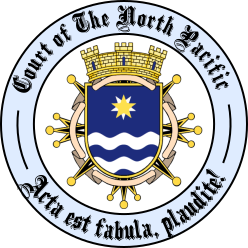- TNP Nation
- Kranostav
1. What law, government policy, or action (taken by a government official) do you request that the Court review?
Previous court ruling number 33, On Candidate Eligibility in Reopened Nomination Periods.
2. What portions of the Constitution, Bill of Rights, Legal Code, or other legal document do you believe has been violated by the above? How so?
The ruling of the court in 2014 explicitly states that the ability to reopen nominations is reserved for general elections (Delegate, VD, speaker) and that judicial elections enjoy no such ability to reopen nominations. This ruling is no-longer in line with existing law, quoted above, which extended the ability to reopen nominations to all elections.
The opinion of the court was correct at the time of the ruling (March 18, 2014) given the existing laws governing elections and the ability to re-open nominations (RON). Shortly after the ruling was announced, CrushingOurEnemies amended their proposed bill addressing a wider scope of RON related issues which contained the above quoted clause and subsequently submitted it to the RA for vote. The bill passed on March 25th, 2014 and has remained law ever since.
3. Are there any prior rulings of the Court that support your request for review? Which ones, and how?
Previous court ruling number 41, On the Physical Representation of Outdated Rulings on Requests for Review, establishes the ability for Requests for Review (R4R) rulings to result in the overruling of previous court rulings, as is being proposed in this R4R.
4. Please establish your standing by detailing how you, personally, have been adversely affected. If you are requesting a review of a governmental action, you must include how any rights or freedoms of yours have been violated.
Standing derived by my position as Court Examiner, defined in Legal Code Section 3.6, Clause 34: "The Court Examiner will have standing in all cases of judicial review brought before the Court."
5. Is there a compelling regional interest in resolving your request? If so, explain why it is in the interest of the region as whole for your request to be decided now.
This request looks to address a contradiction in a previous court ruling with current law. It is firmly in the interest of the region, inclusive of the Regional Assembly and Judiciary, that existing court rulings are in line with currently existing law. Given the previous court ruling was made with a different set of laws governing RON ability, the court should revisit this ruling to ensure the accuracy of existing precedent is upheld.
6. Do you have any further information you wish to submit to the Court with your request?
N/A
Previous court ruling number 33, On Candidate Eligibility in Reopened Nomination Periods.
2. What portions of the Constitution, Bill of Rights, Legal Code, or other legal document do you believe has been violated by the above? How so?
Section 4.4: Overall Election Law - Clause 23:The option to reopen nominations will appear on the ballot as a separate question for each race.
The ruling of the court in 2014 explicitly states that the ability to reopen nominations is reserved for general elections (Delegate, VD, speaker) and that judicial elections enjoy no such ability to reopen nominations. This ruling is no-longer in line with existing law, quoted above, which extended the ability to reopen nominations to all elections.
The opinion of the court was correct at the time of the ruling (March 18, 2014) given the existing laws governing elections and the ability to re-open nominations (RON). Shortly after the ruling was announced, CrushingOurEnemies amended their proposed bill addressing a wider scope of RON related issues which contained the above quoted clause and subsequently submitted it to the RA for vote. The bill passed on March 25th, 2014 and has remained law ever since.
3. Are there any prior rulings of the Court that support your request for review? Which ones, and how?
Previous court ruling number 41, On the Physical Representation of Outdated Rulings on Requests for Review, establishes the ability for Requests for Review (R4R) rulings to result in the overruling of previous court rulings, as is being proposed in this R4R.
4. Please establish your standing by detailing how you, personally, have been adversely affected. If you are requesting a review of a governmental action, you must include how any rights or freedoms of yours have been violated.
Standing derived by my position as Court Examiner, defined in Legal Code Section 3.6, Clause 34: "The Court Examiner will have standing in all cases of judicial review brought before the Court."
5. Is there a compelling regional interest in resolving your request? If so, explain why it is in the interest of the region as whole for your request to be decided now.
This request looks to address a contradiction in a previous court ruling with current law. It is firmly in the interest of the region, inclusive of the Regional Assembly and Judiciary, that existing court rulings are in line with currently existing law. Given the previous court ruling was made with a different set of laws governing RON ability, the court should revisit this ruling to ensure the accuracy of existing precedent is upheld.
6. Do you have any further information you wish to submit to the Court with your request?
N/A


